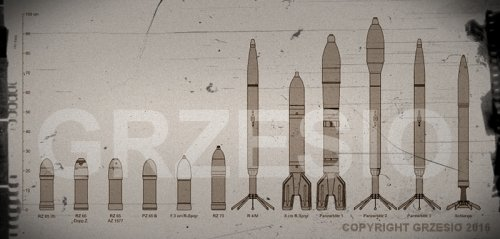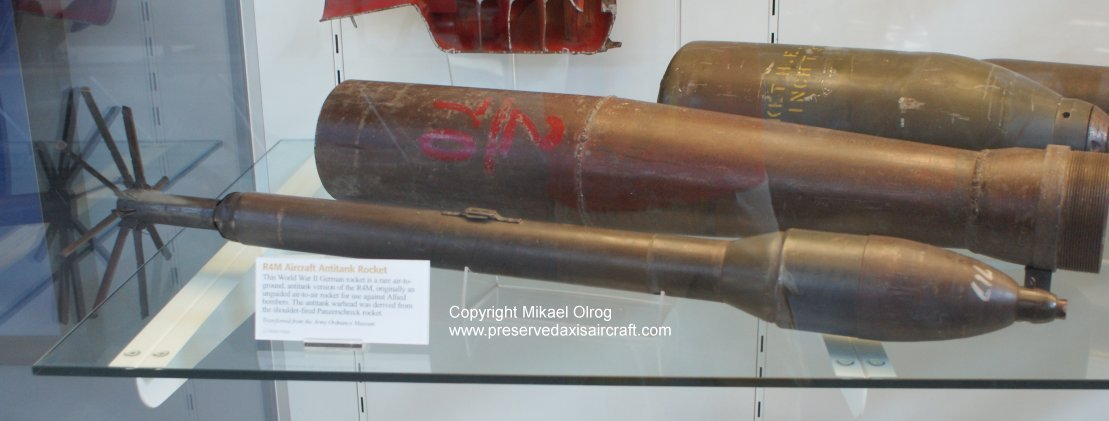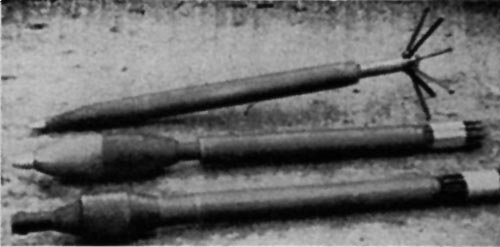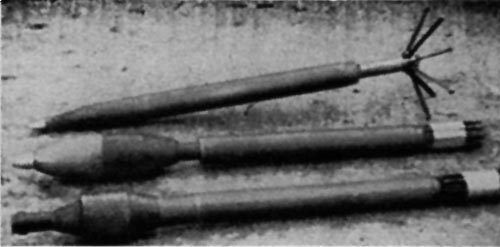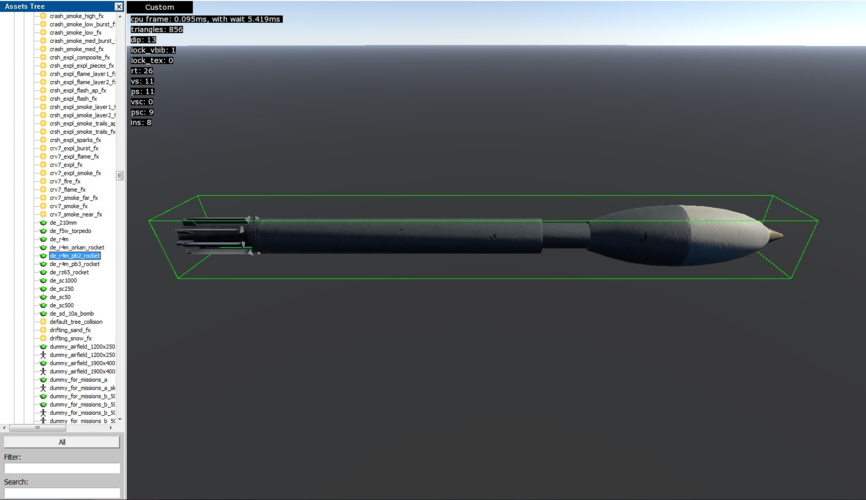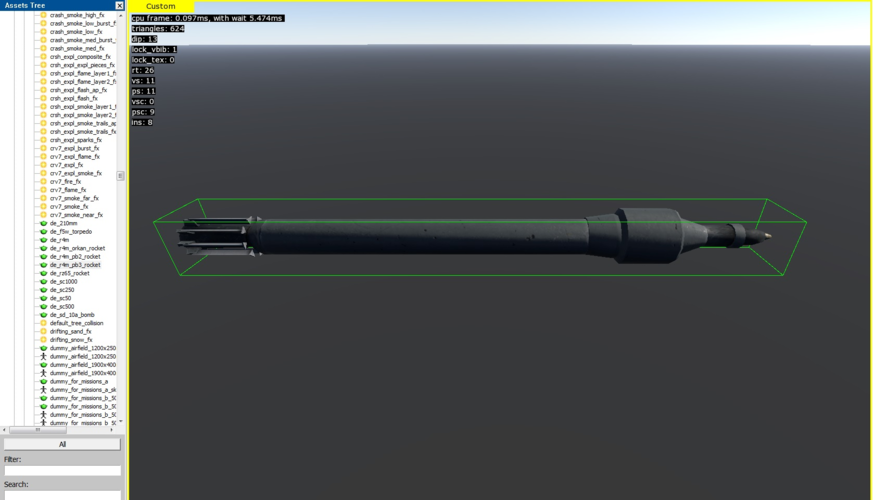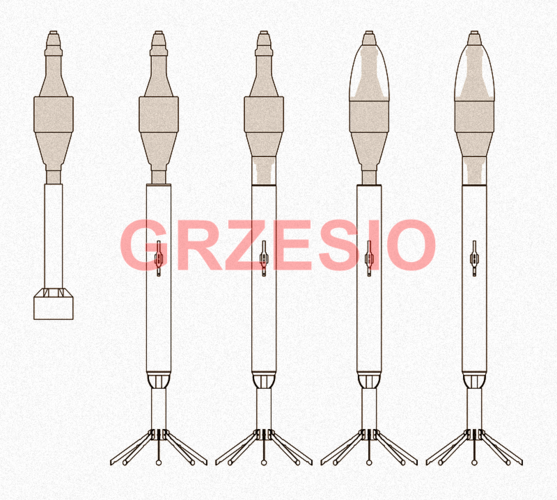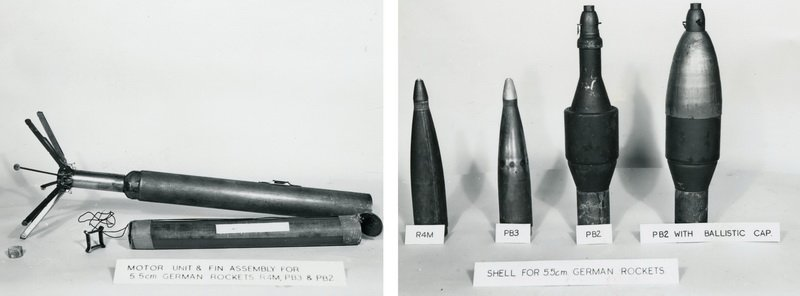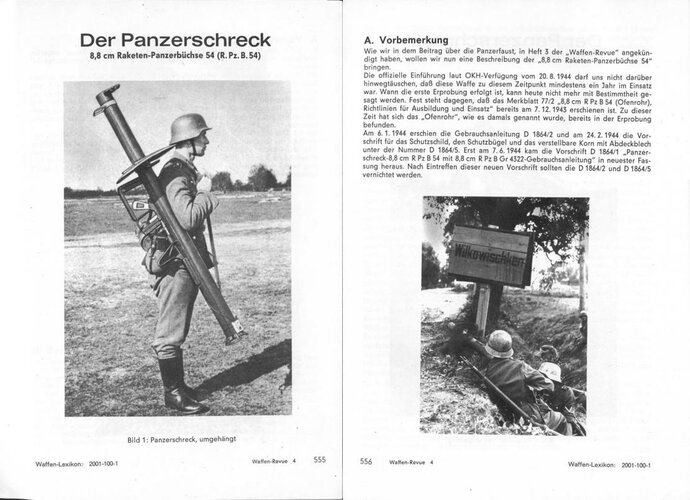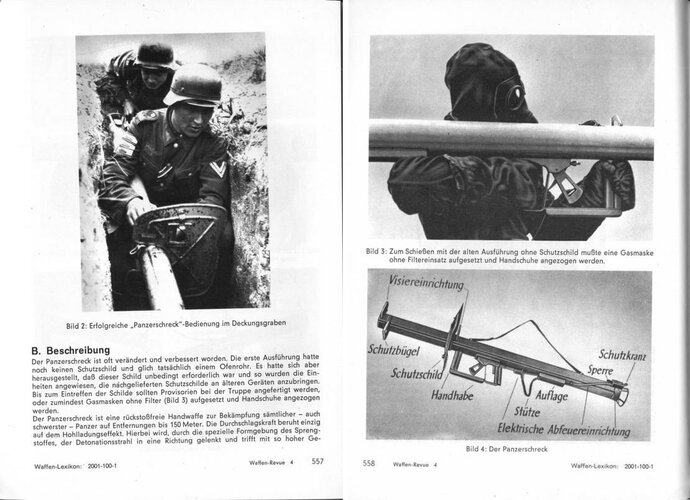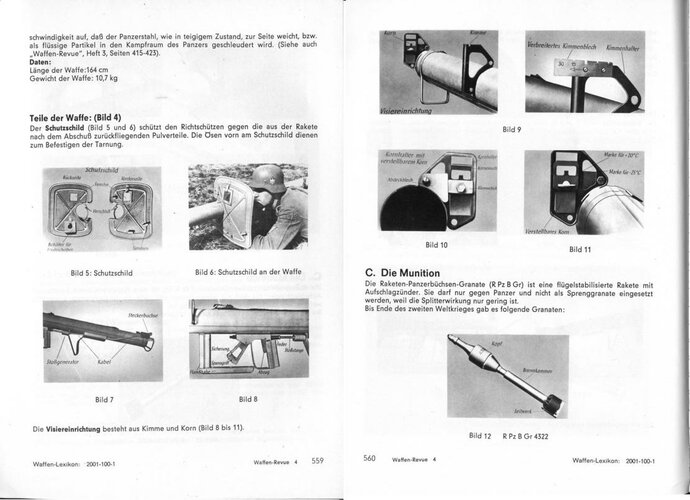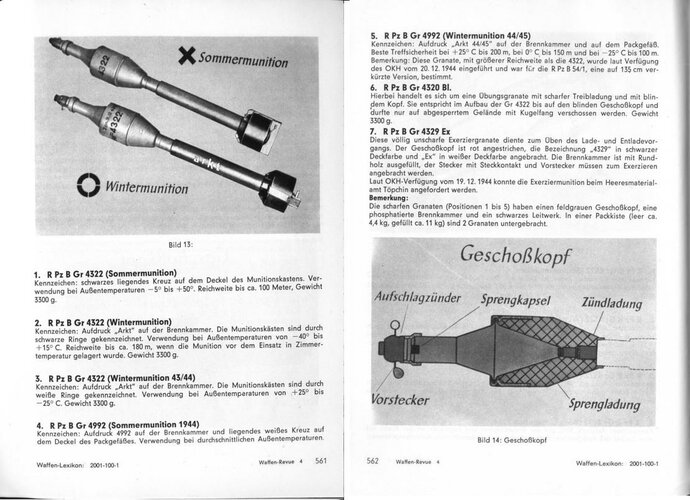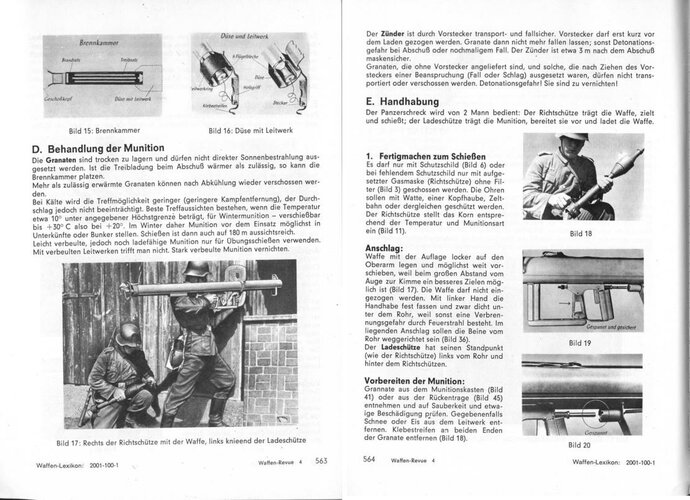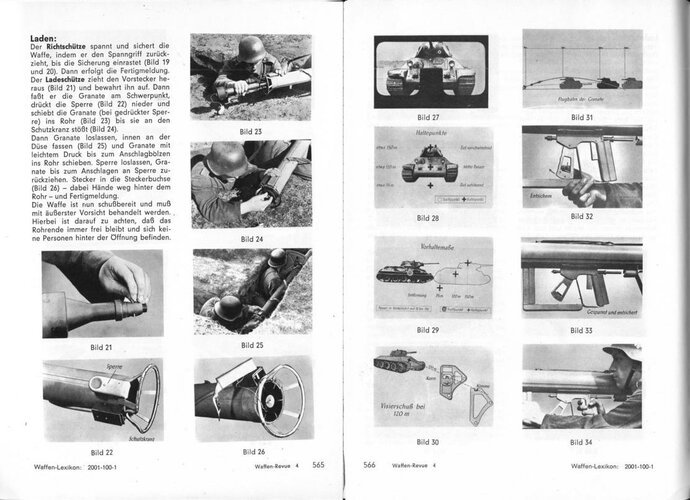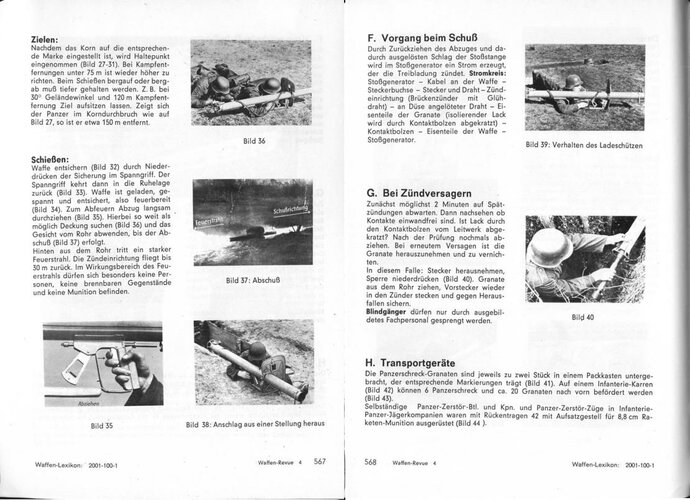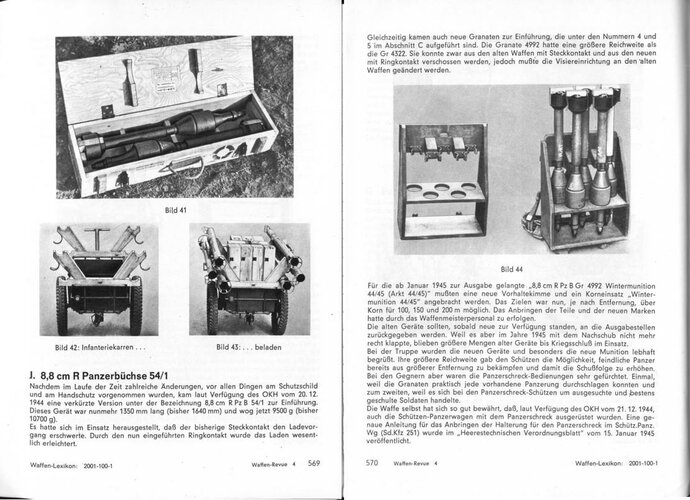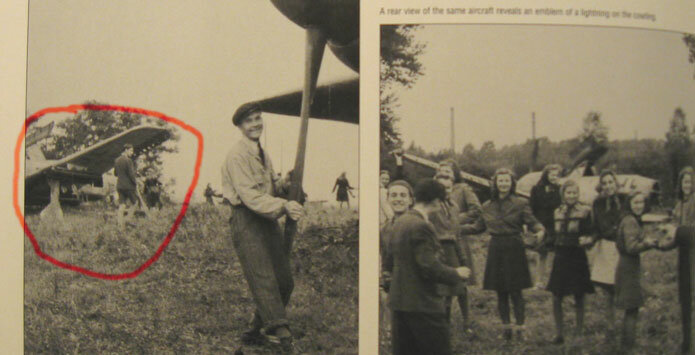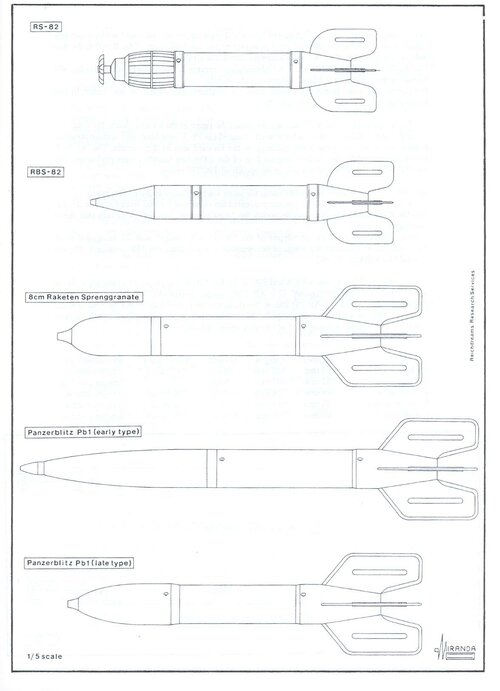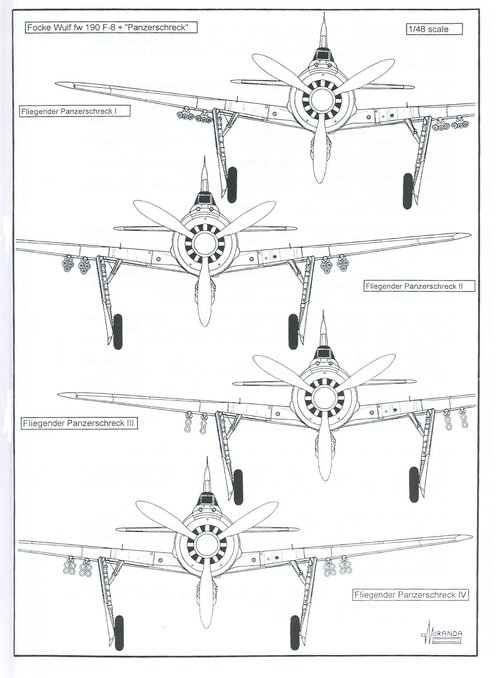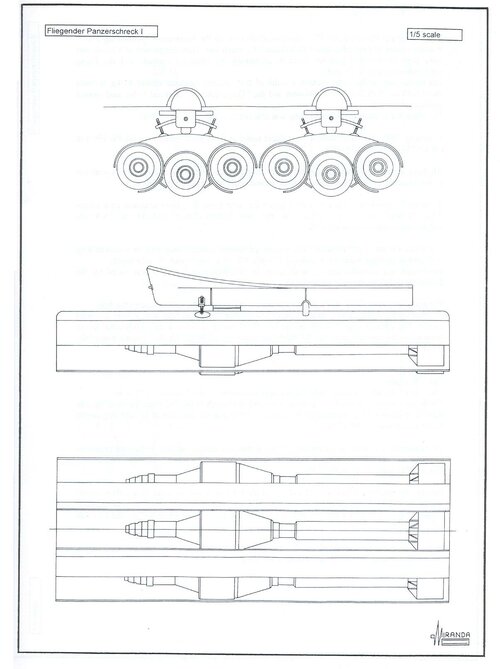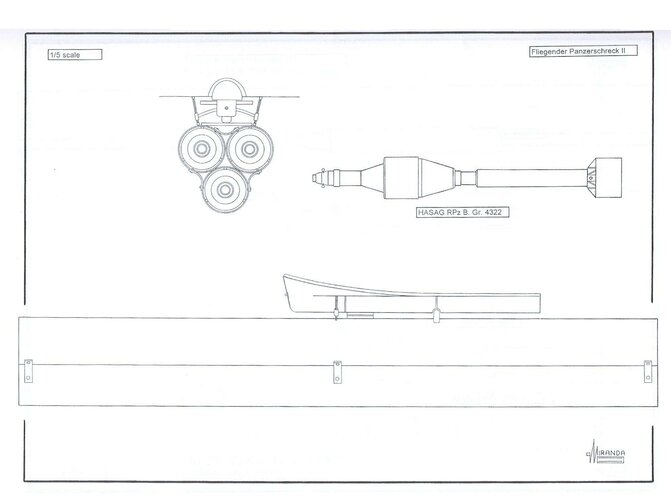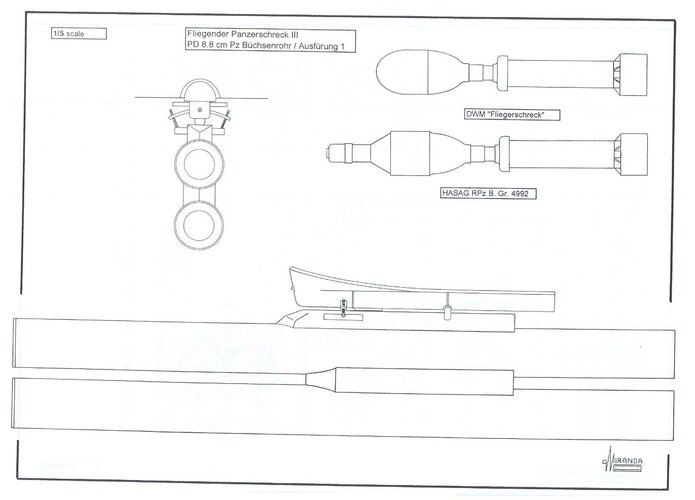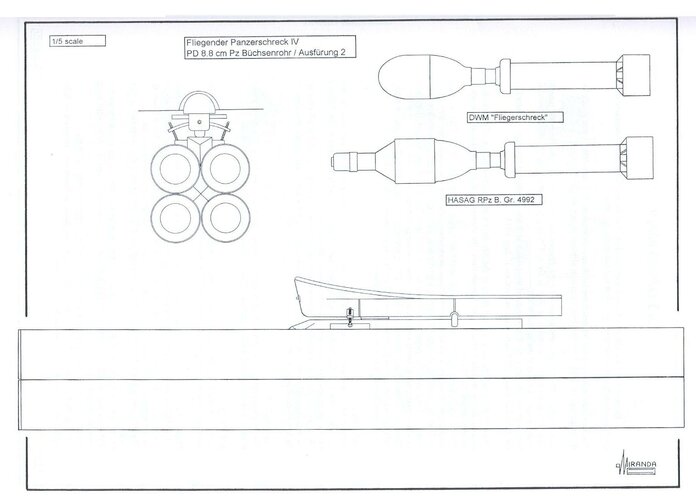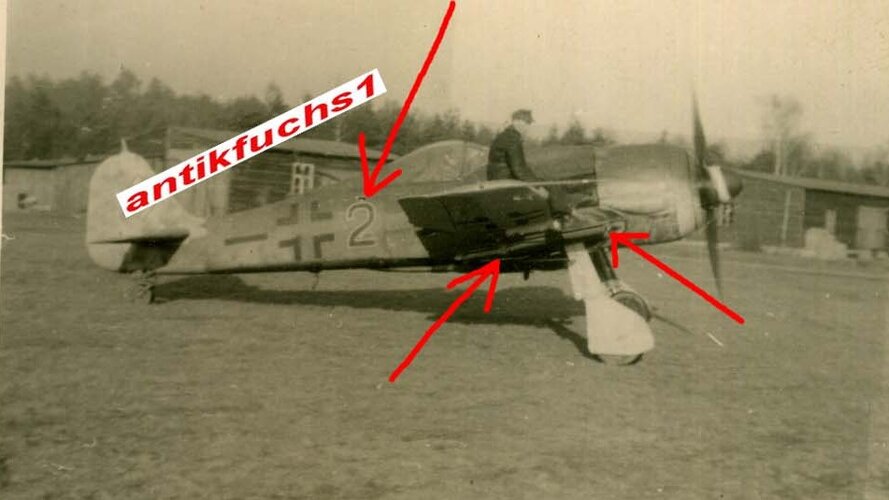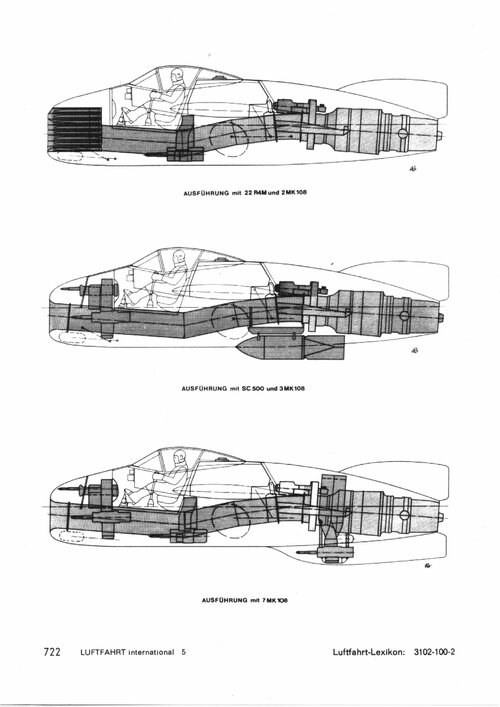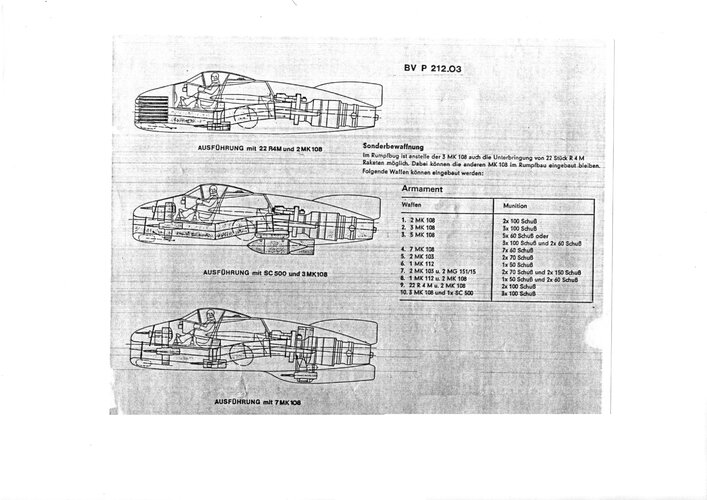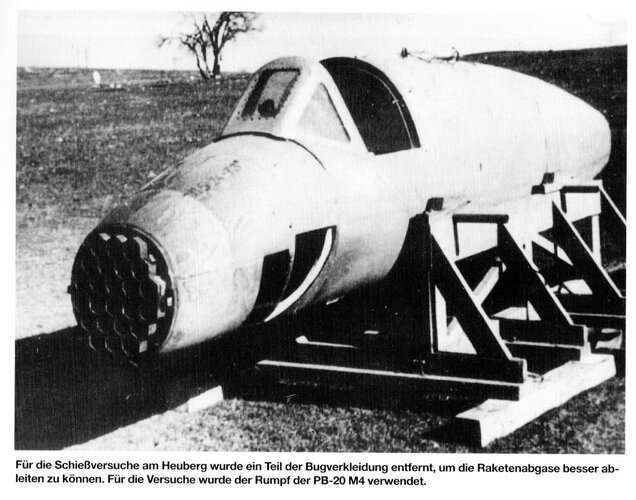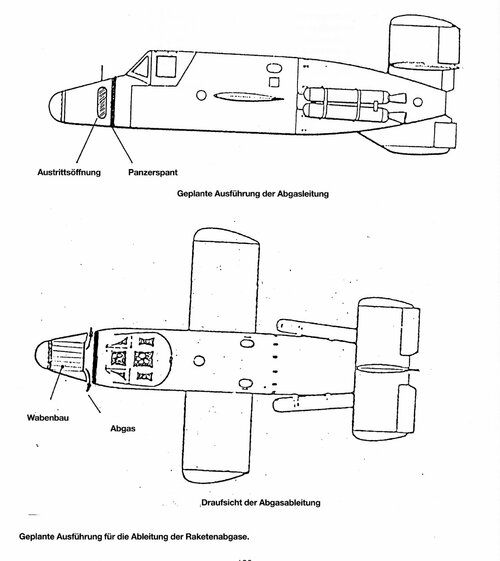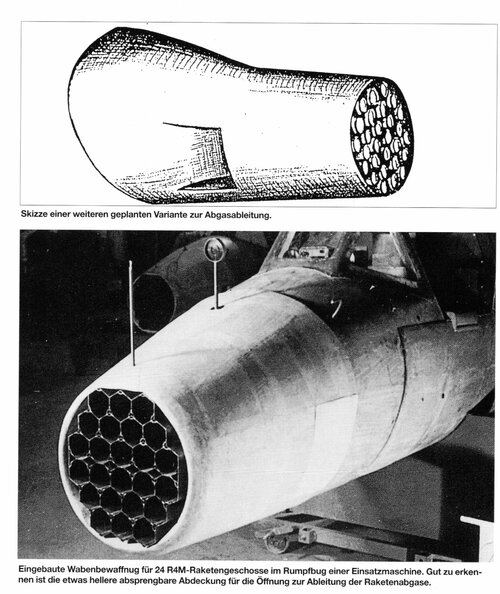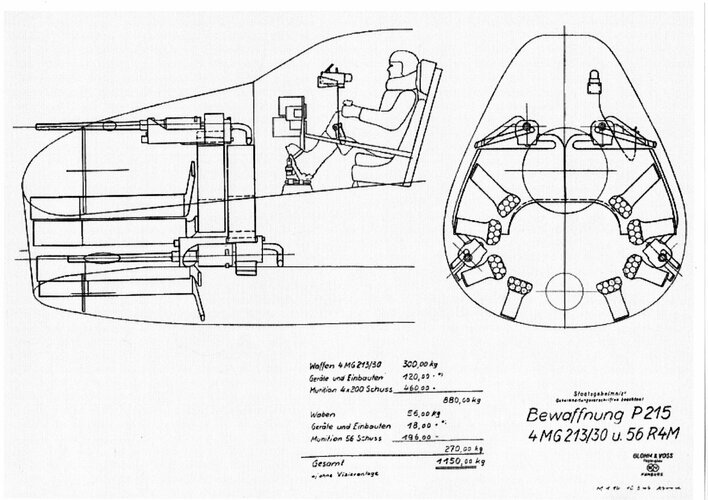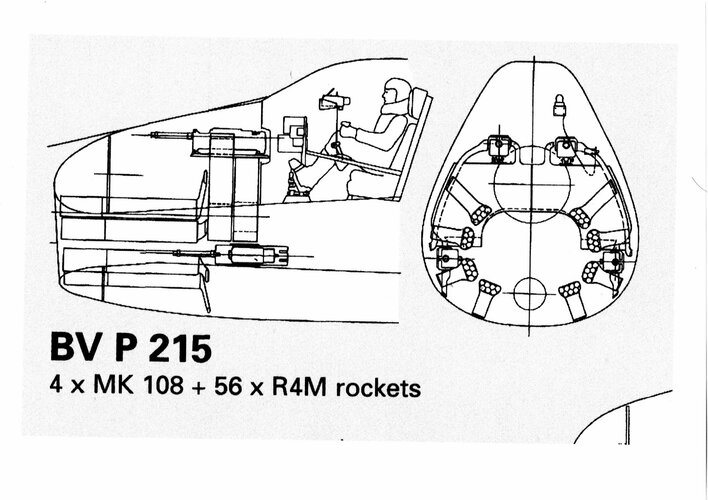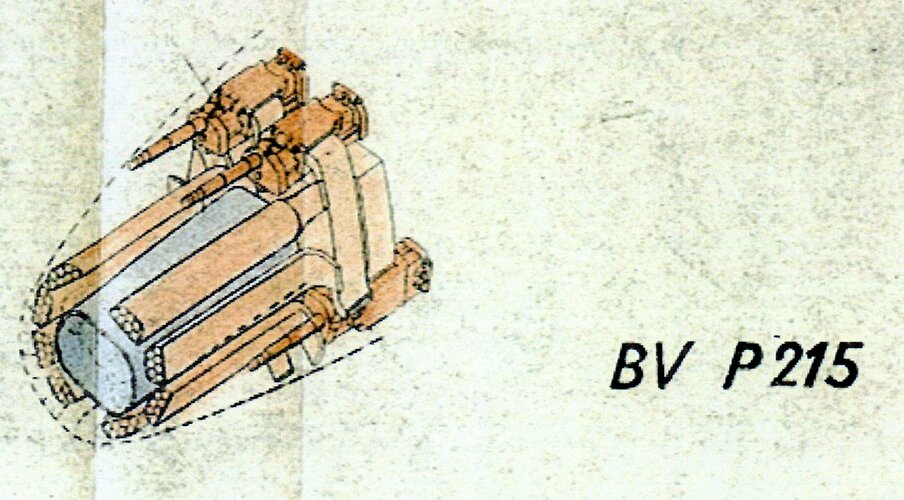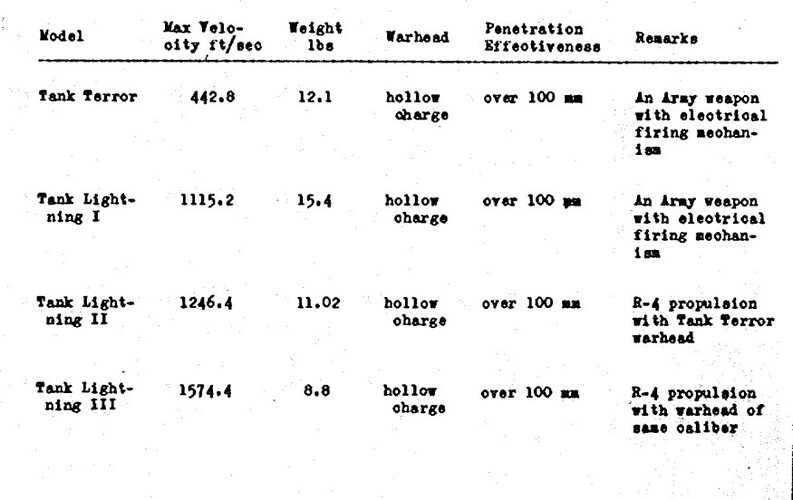Grzesio
ACCESS: Secret
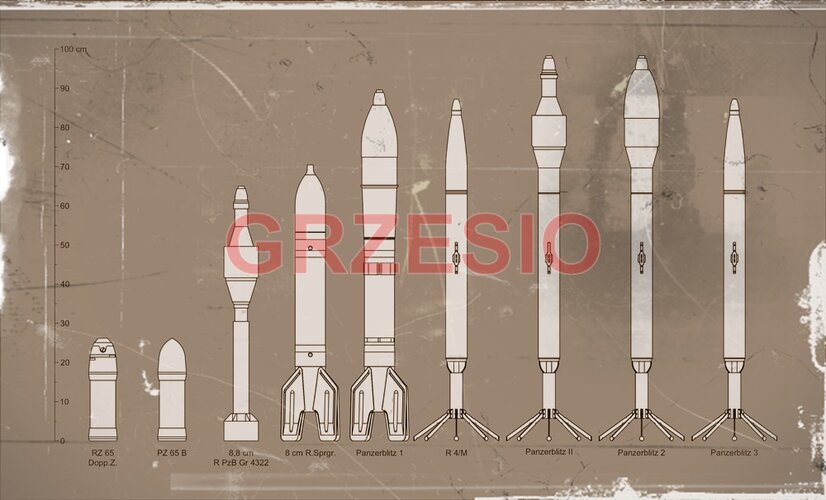
So, L-R:
RZ 65 - HE, air-to-air and air-to-ground, tested approx. 1938-1943;
PZ 65 B - APHE variant of the RZ 65, tested in 1943;
8,8 cm R PzB Gr 4322 (Panzerschreck) - HEAT, tested in late 1944, used in 1945; 8,8 cm R PzB Gr 4992 was most probably never made in series.
8 cm R Sprgr - HE, used in limited numbers; originally a ground-to-ground rocket;
Panzerblitz 1 - HEAT, 8 cm R Sprgr engine, 88 mm Panzerschreck warhead, tested in late 1944, used from at least January 1, 1945;
R 4/M - HE, air-to-air, used in 1945;
Panzerblitz 2 - HEAT, R 4/M engine, 88 mm Panzrerschreck warhead, tested in late 1944, maybe used in 1945;
Panzerblitz 2 with faired warhead
Panzerblitz 3 - HEAT, R 4/M engine, 55 mm warhead, in development, at least static tests of the warhead.
Drawings of the "RPzB Gr 4312" (actually 8,8 cm R Pz Gr 4312), "RPz B Gr 4992" (actually 8,8 cm R PzB Gr 4992), "DWM Fliegerschreck", "Panzerblitz Pb 1 (early type)" and "Fliegender Panzerschreck I", then "Panzerblitz 2" from Hahn's book, as well as "RS-82" and "RBS-82", presented earlier are very inaccurate or fictional/speculative.
Last edited:

